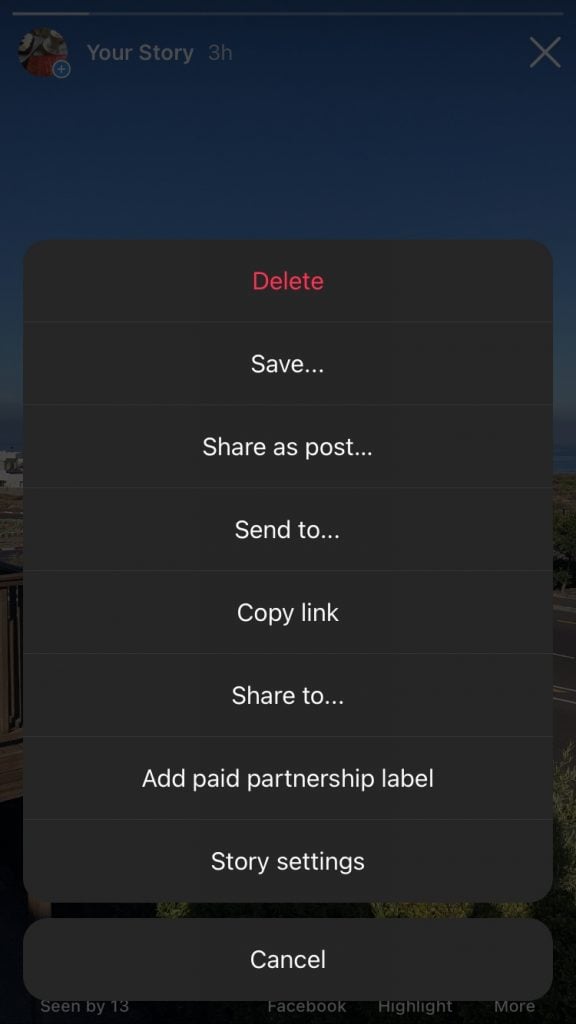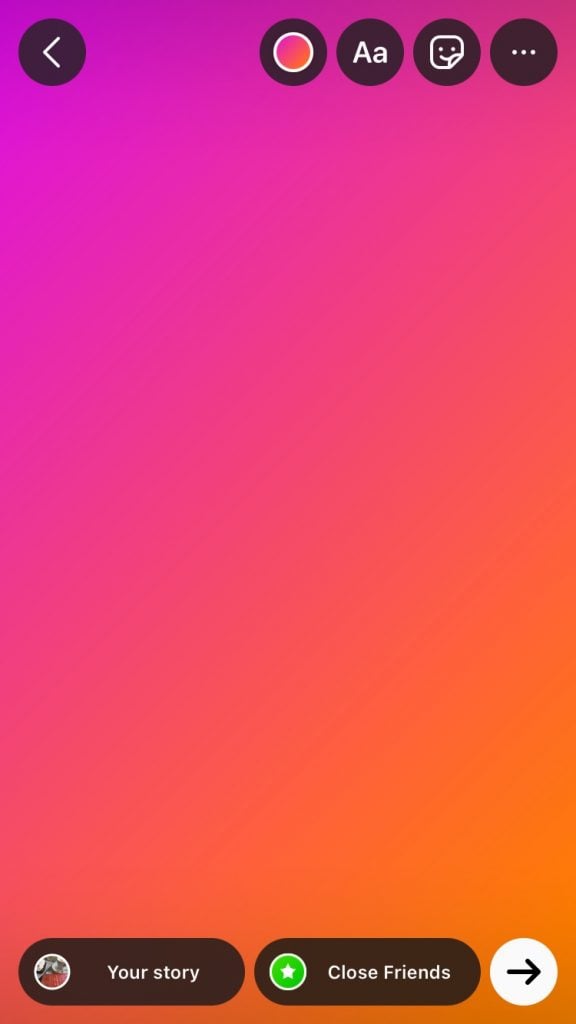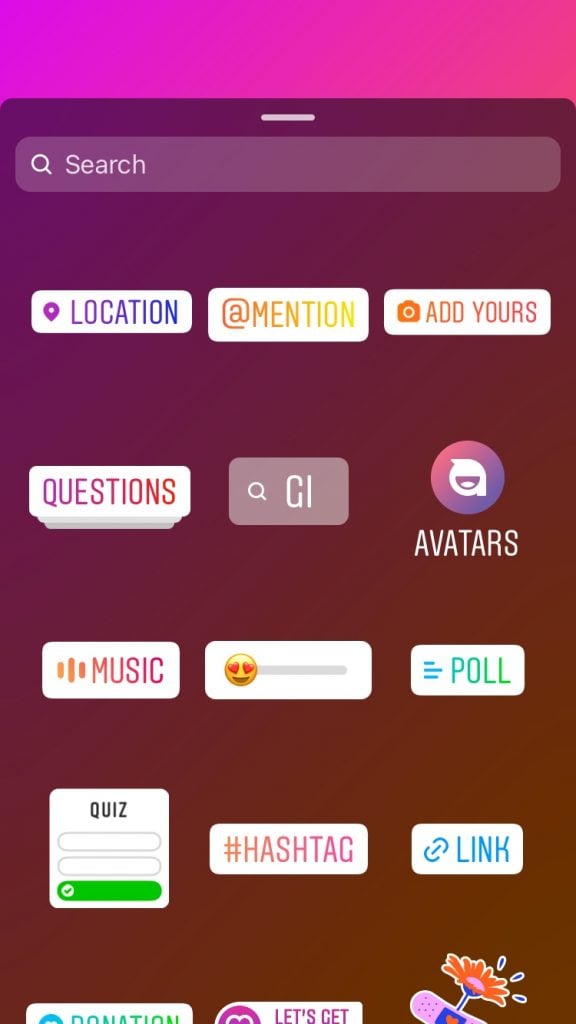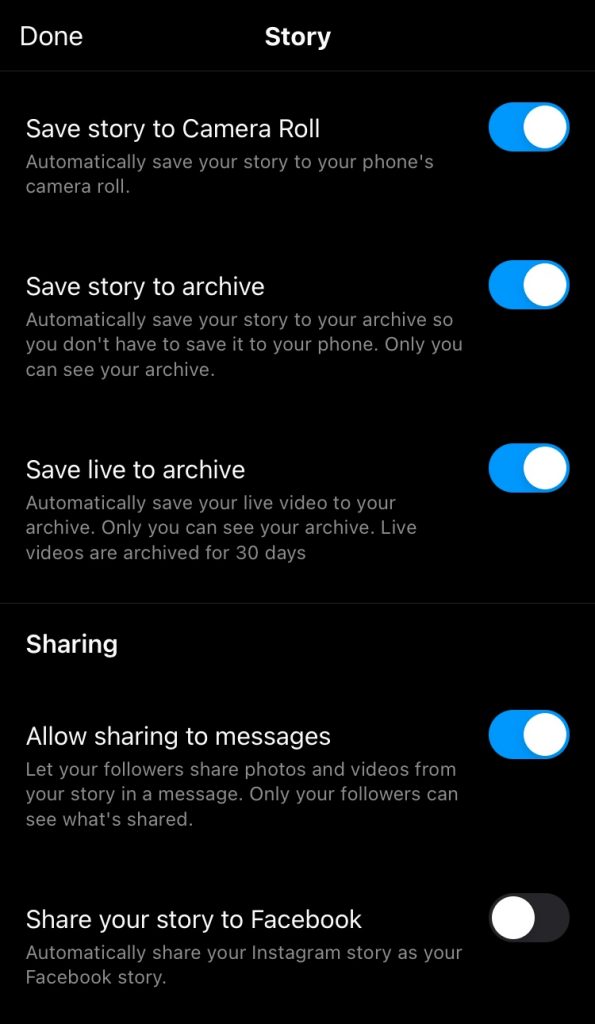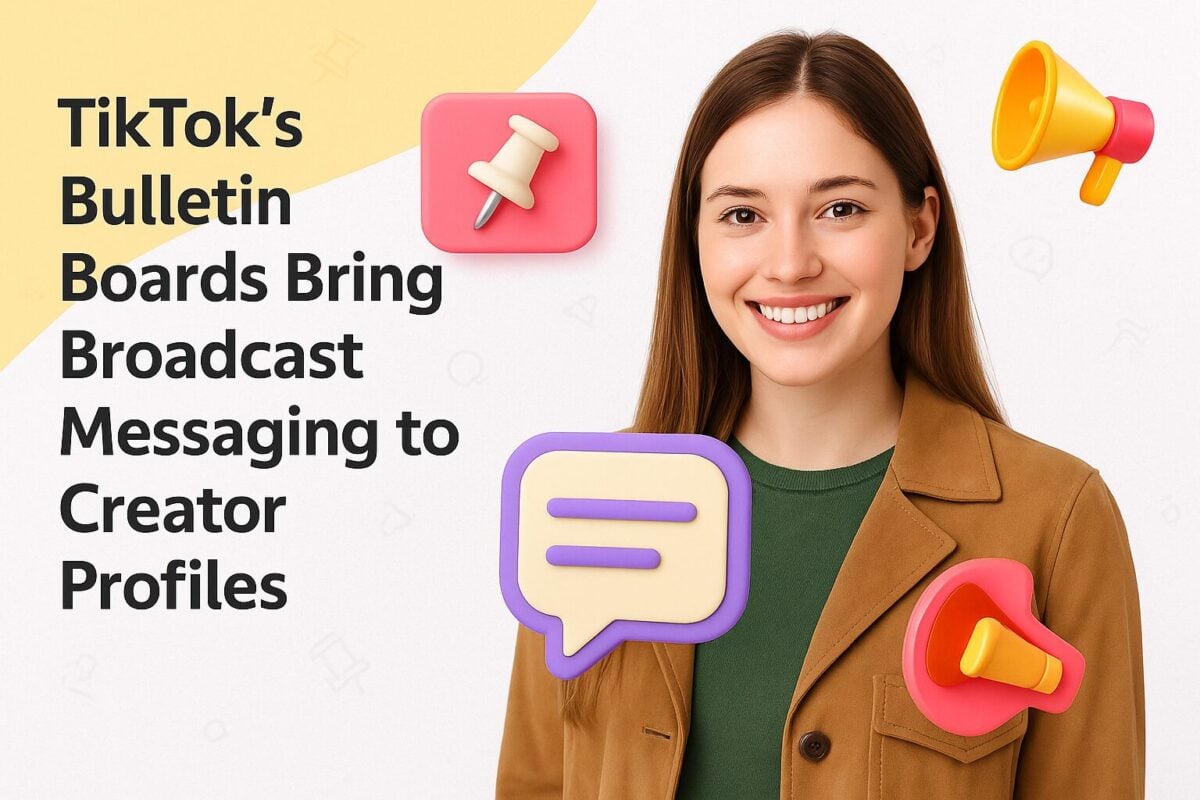Considering that Instagram Stories was launched nearly six years ago already, it can’t really be called a new feature any more. But are people still using Instagram Stories today? Did the feature catch on or disappear like its content?
According to 99firms, nearly 87% of the platform’s users post stories while HubSpot has found that almost 40% of users post a story more than once a week. In fact, if you follow the Instagram marketing trends predicted for the new year, you’ll see that it’s anticipated that even more stories will get created moving forward.
And, it’s not just popular for social purposes. About 33% of the most-viewed stories on Instagram are created by brands.
This brings us to our next question (the reason why you probably landed on this page) – how do you know if your Instagram Stories are getting any views?
In this article, we share the simple steps you need to complete to see who has viewed your story. If the number is lower than you expected, continue reading because we also share some tips for using Instagram Stories to get more views.
Instagram Stories: How to See How Many Views You Had:
- How Can I See Who Has Viewed My Instagram Story?
- Using Instagram Story Analytics
- Monitoring Who Views Your Story
- How to Get More Instagram Story Views
- Get the dimensions right
- Use text
- Add music
- Use GIFs
- Include UGC
- Add a call to action
- Use a template
- Schedule your stories
- Save your stories to your camera roll
- Frequently Asked Questions
How Can I See Who Has Viewed My Instagram Story?
While you can’t see who has viewed your regular photo posts that you share on the social media platform, the good news is that this information is available for the Instagram Story feature. That said, to see which followers and non-followers have viewed your story, you’ll have to work fast. You’ll only be able to get this information up to 48 hours after you’ve posted your story (even if you’ve highlighted the particular story).
Here’s how:
Step 1: Open the Instagram app.
Step 2: Tap on your story.
Step 3: Swipe up on your story. The usernames of the people who’ve viewed your story will appear at the bottom. If no one has viewed it yet, it will simply say “No one has seen this yet”. In this case, give it some time and check back a few hours later again.
If the number of story views is higher than the number of usernames listed, it simply means that the same user has viewed the story multiple times as the number of replays are included in the story views number.
Rest assured, only you’ll be able to see this information. So, if you’re worried by the low numbers (or no viewers at all), no one will be any the wiser about this failed attempt at creating an engaging story.
If the story has since expired (in other words, you’ve posted it more than 24 hours ago), you can still get this information but you’ll need to follow slightly different steps.
Here’s how:
Step 1: Tap on the icon with the three horizontal lines.
Step 2: Select Archive. You might need to tap on the title at the top of the screen for the drop-down menu to open so that you can select Stories Archive.
Step 3: Click on the story. Swipe up on the screen to view the number of story views.
Using Instagram Story Analytics
Now that you have the information, it’s key that you know how to analyze it so that you can act on it appropriately. If you have an Instagram Business page (which we recommend that you do), you can also get data about how many users pressed next and exited your story. For example, if you’ve noticed that there are users who watched your whole story but you don’t currently follow them, a good place to start is to follow them back.
Monitoring Who Views Your Story
If for some reason you want to restrict who may view your story, there’s an easy workaround. After you’ve recorded a video for your story, you can click on the three dots labeled More at the bottom of the screen. You’ll be redirected to a drop-down menu with a number of options.
Click on Story settings. Under Viewing, you’ll be given the option to hide the story and live videos from specific people. Alternatively, it also gives you the option to share it with only close friends that you can select.
Under Story settings, you’ll also find the option to limit who may reply to your story. Here you have three options. You can disable replying altogether, allow your followers to reply to your story via message, or limit this only to followers who you also follow back.
The platform also gives your followers the ability to share videos and photos from your stories in a message. If you want to restrict this ability, you’ll also find this option under these settings.
How to Get More Instagram Story Views
The Instagram Story feature is in some sense almost like reality TV. It’s that sneak peek into the experiences and daily life of users’ favorite social media celebrities and brands that get them excited. To make the most of everything the feature has to offer and the hype around it, here are some hacks and tips that you should also try out.
Get the dimensions right
The dimensions of an Instagram Story are 1080 x 1920 pixels to form an aspect ratio of 9:16. In other words, your content should be 1080 pixels wide and 1920 pixels in length. While you might be more concerned about the numbers involving your views, paying attention to these (less interesting) numbers are just as important. The platform is very strict about its dimensions and if the content that you upload doesn’t adhere to these set dimensions, your video will get cropped. So, get it wrong and that call to action (which we get to later) could get lost and so too your clicks.
Use text
In addition to using visuals to tell your story, you can also turn to text. The secret is to keep it conversational. Also, you’ll want to use the same font that your brand uses on its other profiles for better brand recognition.
Add music
One of the platform’s most popular recent changes is the ability to add music to Instagram Stories which can help your content to stand out. All you need to do is click on the stickers icon (the square with a smiley face) and select the music screen. You’ll be redirected to a new screen where you can search for the song. If you don’t have a song in mind, you can search by mood or genre or simply pick one of the popular songs that will set the right tone. In short, you’ll want the music to match the visuals. That’s the most important trick.
Use GIFs
GIFs that are relevant to your content can help to get more views. You can, for example, use a tool like GIPHY that has a huge collection of GIFs. Not only will you be able to find the right GIF for your message, but thanks to its integration with Instagram it’s also easy to share the GIF directly.
Include UGC
From time to time, it can be a good idea to take advantage of user-generated content (UGC). You can, for instance, create a branded hashtag to collect it and then use a tool like Repost for Instagram to give the original creator the credit if you share their content. That said, just remember to get the creator’s permission beforehand. As they’ll get the recognition, they’ll usually be happy to oblige.
Add a call to action
If you have a business profile with more than 10,000 followers, you can add links to your stories. You can use this feature to add a type of call to action that can drive traffic to your website. Alternatively, you can invest in link-in-bio tools for Instagram like Linktree or Milkshake.
Use a template
One of the ways that you know your content is hitting the mark is when your followers start to recognize your brand by its look. While Instagram Stories is more spontaneous, you can still use it to reinforce your brand identity by using a set of templates. Plus, considering that you can save your best stories as Highlights, it makes sense to invest some time in creating templates that you can tweak later.
Not only will templates help create a cohesive look to improve brand recognition, but it will also actually save you time in the long run. Creating stories is a time-intensive process. They will only be available for 24 hours which means that you’ll need to design stories continuously. With the help of Instagram Stories templates, all you’ll essentially need to do each time is come up with the content.
Schedule your stories
As your story will disappear after 24 hours, it’s crucial that you post it at the most optimal time. For this, you’ll need to use a scheduling tool that integrates with Instagram like Sked, Buffer, or Later. If you mostly use Instagram, we’ll highly recommend Later. While there are a number of Instagram scheduling tools available, Later places a lot of emphasis on visuals.
Not only will it help you to schedule your content for the best times, but it will also make it easier for you to post more consistently by planning a week’s stories at once. Consistency is key when creating a memorable brand – not just with regards to timing but also aesthetics (as mentioned earlier). With Later, it’s also easier to plan your stories visually to ensure that your font and color schemes align with your branding.
What's more, Later also lets you view your Instagram Stories views and engagement data much, much later. Instead of having to worry about viewing it within that short time frame of 48 hours, when you use Later, you’ll be able to track this data for up to three months.
Save your stories to your camera roll
Instagram also allows you to save your stories to your camera roll. You can set this up so that it saves each story to your device’s camera roll automatically. Alternatively, if you only want to save select stories, you can click on the three dots labeled More to be redirected to a drop-down menu with the option to save it to your phone.
The reason why it's a good idea to do this little effort of saving stories is because some stories can make good evergreen content. For instance, if you’re sharing important details in a story, like a competition, you’ll want to share this story more than once. Alternatively, it can simply be a great way to recycle the stories that have performed well in the past.
Wrapping Things Up
If you don’t want to invest in an Instagram scheduling tool that includes access to Instagram Stories analytics, you can still get access to who’s viewed your story. While it’s really simple (it probably doesn’t get any easier), you need to be cognizant of the fact that this valuable data will disappear 48 hours after the story was published. That doesn’t leave you with a lot of time.
Also, considering that you’ll probably create multiple stories each week, it can become a logistical nightmare trying to remember when to post what and when what was posted to make sure that you don’t miss that small window period for viewing Instagram Story views. So, all in all, it’s best to leave it to a scheduling tool so that you can make sense of the numbers when you’re not pressed for time.
Then, to make sure that your stories are getting views, be sure to get the dimensions right and play around with different elements like GIFs, text, music etc. For this step, we highly recommend that you use templates (something which a scheduler most likely also includes in its package).
Frequently Asked Questions
How do you schedule an Instagram Story?
There are relatively few tools that you can check out if you want to schedule your Instagram Stories. You can, for example, try Later, Buffer, Storrito, Sked, or SocialBu. You can use these to plan your whole story at once, set the best time, etc. Not only is it helpful for scheduling, but also for analytics. For example, with a tool like Later, you’ll be able to access the Instagram Stories views and engagement for up to three months.
How do you save your Instagram Story to your camera roll?
Instagram allows you to save your Instagram Story to your camera roll. You can either set it up so that it saves all your stories automatically via its Story settings or you can manually save select stories. If you only want to save a specific story, you simply click on the three dots labeled More. You’ll be redirected to a drop-down menu with the option to save it to your device.
How can you estimate the reach of your Instagram Stories?
You can, for example, check out a tool like Influencer Marketing Hub’s Instagram Stories Reach Estimator Tool. It’s a free tool that you can use by entering the Instagram username. This way you’ll be able to view KPIs for Instagram Stories for any public account.
Should you use a template for Instagram Stories?
Yes, it’s highly recommended that you also use templates when creating Instagram Stories. In short, an Instagram Story template is a pre-made graphic that’s created according to the Instagram Story image guidelines. This template can then be customized for individual purposes or used as it is. Not only will it help you to save time, but it can also create a cohesive, consistent look for better brand recognition.
Can you add music to an Instagram Story?
Yes, you can. This feature was introduced a few years ago. To add music to a story, you need to click on the stickers icon (it’s a square with a smiley face) and select the music screen. You’ll be redirected to a new screen where you can search for a song. If you don’t already have a song in mind, you can search by mood or genre or choose one of the most popular songs.

